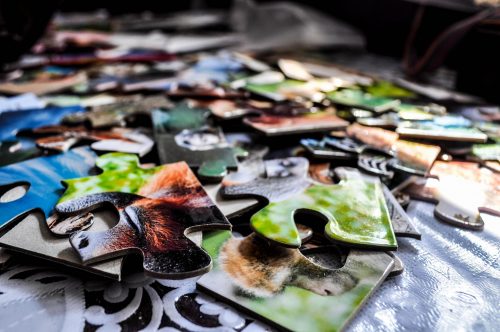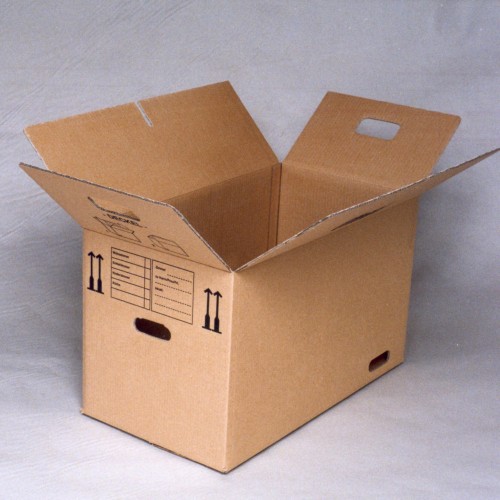There’s nothing for it! I’m gonna have to blog messy – confused and conflated as I resume my passion for open learning and rejoin the conversation on all things open and education. Well, actually, as I try and firm up a PhD research proposal and, fingers crossed, get down to the business of carrying it out – as an open researcher, possibly.
I’m a full-time research student funded on a 1+3 deal, which means that I had to undertake a Research Master’s before embarking on the PhD proper. The good news is I passed my MRes. I received final confirmation just last week. The thing is, although I gained valuable skills, I think the exercise dealt me something of a curve-ball with regards to my relationship with open learning. No, what I really mean is learning in the open. It served to funnel me into an institutional programme of prescribed assignments and to undertake a dissertation at breakneck speed. There was no time to learn outside of these parameters and, once the programme had commenced, no time to reflect on the implications of decisions made for pragmatic reasons. Any way, I’m now in a position to reflect on my experience and to plan the way ahead – back on the open road 🙂

Originally, I responded to a call for research proposals under the theme of ‘Literacies for Learning in a Digital Age’. I proposed something relating to literacies and professional learning in open networks. However, from the get go (interview) the question was “what professionals?”, “what context?”, to which my non-plussed answer was “professionals, people, in networks, the Internet”. And then the momentum of the MRes programme kicked in and there was no time to unpack my thinking and to take this forward. But now that I can go back, I see where the impasse occurred. There was much that was conflated.
The call itself was conflated. Areas suggested for investigation were conflated across contexts for learning and across the disciplines of Technology Enhanced Learning (TEL) and literacies studies. These are disciplines that I’m conflated over myself as I have a subject specialism in Adult Literacy and a Master’s degree in Technology, Learning, Innovation and Change, which presents equally a source of synergy and challenge. There are different epistemological and methodological approaches associated with each respectively, and the uneasy relationship this causes is well-documented (Goodfellow & Lea, 2013; Gourlay, Hamilton & Lea, 2014; Lea, 2016).
I’m further conflated across contexts. I often fail to distinguish between everyday learning, lifelong learning, personal learning and professional learning, informal learning for continuing professional development and informal workplace learning. I’m also conflated across roles, or identities. Am I a learner, an educator, a researcher, learning support or learning technologist? Furthermore, am I positioned inside the academy or outside? Maybe I’m just me: living and learning, and liking it all the more when I’m participating in open networks.
It’s fair to say that I don’t easily recognise boundaries. There can be little doubt that I’m “a boundary creature [that] inhabits more than one world” (McGinnis, 1999, p.61). I think this is due in part because of my familiarity with network technology and learning in networks. Also, because the ability to adapt across contexts with the requisite change of identity is fundamental for a literacies practitioner so that they can support literacy as situated social practice wherever they’re deployed. Thankfully, the ability to perform work around boundary objects in interdisciplinary teams is an acknowledged imperative relative to TEL (Scanlon and Taylor, 2016), so all is not lost.
Given all this, and in terms of moving forward, I’m mindful of Maxwell’s (2013) advice that a conceptual framework for research is something that you build, not something that exists ready-made, and that the most productive ones often bring in ideas from outside traditionally defined fields and/or integrate different approaches or lines of investigation, or theories that hadn’t been previously connected.
It’s here that Actor Network Theory (Latour, 2005 and Law & Hassard, 1999) speaks to my sensibilities. ANT does not countenance binary concepts and plays down context in favor of contextualization. To counter technological determinism and social determinism, it takes a relational view that sees boundaries between the social and the material as emerging from the strength of relationships between human and non-human actors. This relationship is manifested, or enacted, in everyday practices.
It seems that Actor Network Theory might be a useful way to investigate Open Educational Practices (OEP). I provide the definition of OEP advanced by Ehlers and Conole (2010), although it must be noted there’s no singularly agreed definition.
‘Open Educational Practices (OEP) are the use of open educational resources with the aim to improve the quality of educational processes and innovate educational environments.’
Actor Network Theory would enable OEP to be framed as sociomaterial practice and to highlight the literacy practices and use of learning technology that OEP embeds.
I mean, how does OEP get done? What does it look like? What components hold it together as a practice – texts, tech, policies etc. etc. How does it hold together to become a recognizable practice? In terms of the relationships that hold it together, what are the relative strengths, weaknesses, opportunities and threats?
O.K, but the question still remains, where is this OEP; where are the open education practices situated that I hope to research? In the network, of course, in the network of practices that pertain to Open Scholarship (Weller, 2011), or Networked Participatory Scholarship (Veletsianos & Kimmons, 2012), and given ANT’s proclivity towards the symmetry of human and non-human actants, the recent conceptualization of the self as OER (Koseoglu and Bali, 2016), indeed a human OER (Funes, 2014), seems an almost irresistible prospect to research from such a perspective.
“Open educational practices as resources for others to use” (Koseoglu and Bali, 2016).
That is, the informal everyday activities that arise out of the relationships and motivations of individuals participating in open networked activities such as blogging and Tweeting.
So, along with a range of concepts, the OEP jigsaw pieces are out of the box, or maybe the self-OER or human OER jigsaw pieces are out of the box, who knows. And who knows, as I progress my research ideas, how they’ll be assembled and what picture they’ll present.
References:
Ehlers, U. and Conole, G. (2010) ‘Open educational practices: Unleashing the power of OER’, UNESCO Workshop on OER in Namibia [Online]. Available at http://efquel.org/wp-content/uploads/2012/03/OEP_Unleashing-the-power-of-OER.pdf (Accessed 14 January 2017).
Goodfellow, R. and Lea, M.R., 2013. Literacy in the digital university: Critical perspectives on learning, scholarship and technology. Routledge.
Gourlay, L., Hamilton, M. and Rosalind Lea, M. (2014) ‘Textual practices in the new media digital landscape: messing with digital literacies’, Research in Learning Technology, vol. 21, no. 0 [Online]. Available at http://researchinlearningtechnology.net/index.php/rlt/article/view/21438 (Accessed 14 January 2017).
Koseoglu, S. and Bali, M. (2016) ‘The Self as an Open Educational Resource [1091]’, #OER16 [Online]. Available at https://oer16.oerconf.org/sessions/the-self-as-an-open-educational-resource-1091/ (Accessed 6 February 2017).
Latour, B. (2005) Reassembling the Social: An Introduction to Actor-Network-Theory. Oxford, England: Oxford University Press
Law, J. & Hassard, J. (1999) Actor Network Theory and After. Oxford, England: Blackwell
Lea, M. R. (2016) ‘Academic literacies: looking back in order to look forward’, Critical Studies in Teaching and Learning (CriSTaL), vol. 4, no. 2, pp. 88–101.
McGinnis, M.V. (1999) Bioregionalism. Cited in Adams, A., Fitzgerald, E. and Priestnall, G. (2013) ‘Of Catwalk Technologies and Boundary Creatures’, ACM Transactions on Computer-Human Interaction, vol. 20, no. 3, pp. 1–34.
Scanlon, E. and Taylor, J. (2016) ‘Is technology enhanced learning an interdisciplinary activity?’, [Online]. Available at http://oro.open.ac.uk/46300/ (Accessed 14 January 2017).
Veletsianos, G. & Kimmons, R. (2012). Assumptions and challenges of open scholarship. International Review of Online & Distributed Learning, 13(4), 166-189.
Weller, M. (2011). The Digital Scholar: How technology is transforming scholarly practice. Basingstoke: Bloomsbury Academic.
Image: Erdenebayar https://pixabay.com/en/jigsaw-puzzle-puzzle-picture-pieces-712465/

